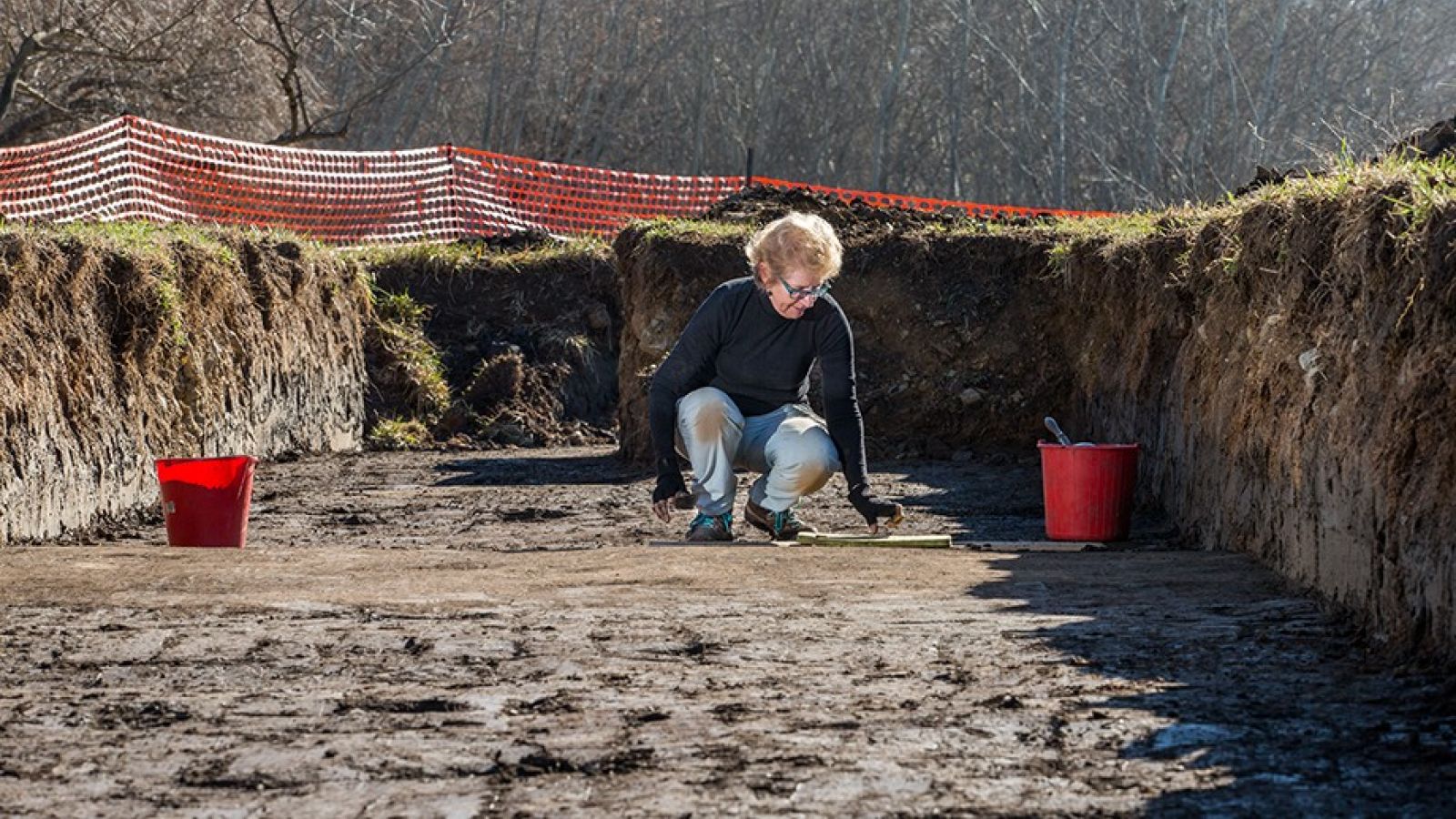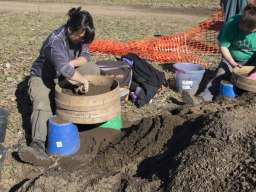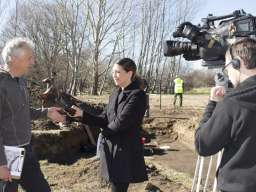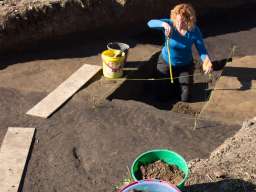ANU archaeologists dig up WWI history in ACT

ANU student Marylyn Powell assisting in the dig. Image: Stuart Hay, ANU.
Australian First World War era history is being unearthed as a team of archaeologists from the ANU School of Archaeology and Anthropology excavate trenches dug by the Duntroon School of Trench Warfare in 1916.
The site at Jerrabomberra Wetlands in Canberra is one of three used to train officers in the use of military trenches prior to being sent to the Western Front, and is the only site left undeveloped.
Project leader and College of Arts and Social Sciences archaeologist Dr Tim Denham said early work had revealed a number of the training trenches in remarkable condition.
"Things look good," he said. "We've stripped off the top layer of rubble fill to expose the original ground surface. When we did that you can see two trenches that are visible in the photos from the 1940s.
"You have a whole series of trenches used for different purposes, whether they're a supply trench, or a mortar bombing trench, or a front line trench."
Whilst digging has only just begun, Dr Denham said there had already been some significant finds.
"We've found some shotgun cartridges with the old brass cases that may date back to the First World War. They've been sent back to the lab," he said.
Assisting in the dig is Marylyn Powell, a registered nurse and mid-wife who has worked her way through study and is now coming to the end of a Masters in Archaeological Science. She said the experience had additional meaning as her great-uncle died during the WWI Battle of the Somme.
"It is brilliant, I feel very fortunate to have this experience," she said. "It's just lovely out here, to have the opportunity to find some history."
Dr Denham said he was hoping for no further setbacks after the project was put behind by about a week due to heavy rain.
"We had to pump the water out and you always hope that a cow hasn't fallen in overnight," he said.
He's not the first to have the concern. Since the War the land has been used to graze cattle and in 1926, with the training trenches still intact, the lessees of the site complained that they nearly lost a valuable jersey heifer in the trenches.
The trenches were eventually filled in by another farmer who, frustrated by years of bureaucratic in-action, took the job upon himself in 1936.


